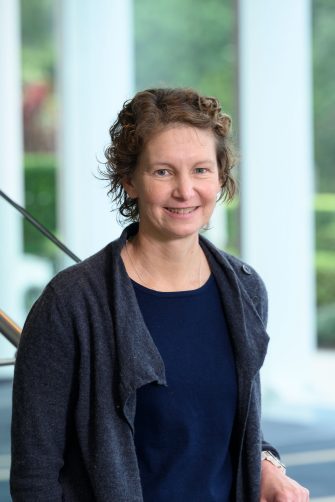 |
Contributions to the ACPSEMA/Prof Holloway has been an ordinary member of ACPESM for over twenty years. She is a Research Physicist at the Liverpool and Macarthur Cancer Therapy Centres and Conjoint Associate Professor at University of New South Wales. Her contributions to ACPESM have helped keep ACPESM members at the forefront of changing Medical Physics practice. For example, A/Prof Holloway is the Chair of the ACPSEM Artificial Intelligence working group and was a member of the organising committee for NSW/ACT ACPSEM branch workshop on Machine Learning. She is a member of both the productive ACPSEM MRI-Linac Working Partyand the organising committee for the NSW/ACT ACPSEM branch and University of Sydney Implementation and Integration of MRI in Radiation Oncology workshop. A/Prof Holloway is actively involved in Medical Physics education through curriculum development and lecturing in the ACPSEM-accredited Medical Physics programs at the University of Sydney and University of Wollongong and teaching medical physics and radiation oncology trainees within the radiation oncology department at Liverpool and Macarthur Cancer therapy centres. She was a member of the expert panel for the review of the ACPSEM Training Education And Progression (TEAP) requirements. She chaired the organising committee for the NSW/ACT ACPSEM branch workshop on imaging, including establishing sign-off criteria for TEAP attendees based on workshop attendance and follow-up work, the first workshop to take this approach. A/Prof Holloway has made a significant contribution to ACPESM governance over many years. She was Chair of the NSW/ACT ACPSEM branch education subcommittee, Vice Chair and Chair of the NSW/ACT ACPSEM branch committee, member of both the NSW/ACT ACPSEM branch research committee and ACPSEM council. She was also Associate Editor for Australasian Physical and Engineering Sciences in Medicine journal. Contributions to the Medical Physics FieldA/Prof Holloway leads the radiation oncology medical physics research group at the Ingham Institute and Liverpool and Macarthur Cancer Therapy centres. In addition, she leads the associated radiation oncology research executive committee that is responsible for leadership and strategy of the Radiation Oncology department. Since her employment as a research medical physicist, she has built her program, utilisingexperienced researchers as mentors from other professions and other external medical physics research groups. She has mentored junior researchers to the point where they are now successfully obtaining their own research funding including three members that have achieved Cancer Institute NSW ECFs. She hasattracted $10.8M in research funding as a CI ( $2.5M as CIA) to e stablish her program’s research. Since 2011 A/Prof Holloway has published over 160 papers with a third as first or senior author. One of the programs A/Prof Holloway leads is the highly successful and collaborative research program that has led to the establishment of the largest dataset of clinical radiation therapy patient treatments in Australia ( > 30,000 patients), with links to the largest datasets in the world. The dataset, called the AustralianComputer Assisted Theranostics distributed data network (or the AusCAT network), provides timely access to Australia's largest linked cohort of clinical datasets across Australian and international research groups from Denmark, Norway, the Netherlands and the USA. The AusCAT network provides a core infrastructure platform for radiation oncology clinics to evaluate their performance/outcomes and data analysis research with the highest quality of model data validation possible. A/Prof Holloway’s team led a program of work analysing the variation in radiation therapy target volume delineation and the impact of this on dosimetry and treatment outcomes. This work has developed recommendations that were included in European and USA best practice guidelines as well as being implemented in over 40 international studies.A/Prof Holloway led the research into improving our knowledge on where radiation should be delivered having acquired an NHMRC project grant as CIA to fund the research. She established and facilitated the collaborations necessary to develop this research program, coordinated between different centres and multi-disciplinary groups, in order to perform the data collection (blinded radiation oncologist contours) and data analysis. She was senior author on the publications adopted in the international best practice guidelines and has mentored early career researchers and students to grant funding success in this space. She has been led grants funding this work from the NHMRC project grant sche me ( CIA on APP 1077788) , Australian bre ast cancer foundation and Cancer Australia (APP 1033237). A/Prof Holloway led the program and mentored the early career researchers to enable the development and clinical implementation of the Seedtracker software. This involved leading algorithm development, software implementation and establishment of the multi-centre clinical trials. Research mentoring is a passion of A/Prof Holloway and has resulted in the growth and development of herresearch program. She has mentored four of the researchers currently in her research program through their honours or PhD programs and then through PhDs and on to becoming independent clinical and academic researchers attracting their own research funding including funding from the Cancer Institute of NSW, Cancer Council and ARC. A/Prof Holloway’s research program includes complex mentoring scenarios and brings together researchers from different backgrounds and research cultures where she has mentored researchers/students from medical physics, computer science, radiation oncology and radiation therapy backgrounds. This has led to the development of a number of high performing multi-disciplinary research directions which have successfully attracted NHMRC, Cancer Institute and Cancer Council grant funding. A/Prof Holloway has supervised 21 PhD, 15 MSc and 11 honours students to completion who are all now working in academia or clinical radiation oncology; for example, former PhD students are now working in high impact roles including as Chief Medical Physicists in Australian hospitals. She is currently supervising 9PhD students. She acts as a co-supervisor for students who are being supervised by early career researchers within her research program, supporting both the students and the less experienced supervisors. In summary, A/Prof Holloway has made outstanding contributions to Medical Physics in Australasia through research, education and professional service to ACPSEM. She is a very deserving recipient of the ACPSEM Distinguished Service Award. |